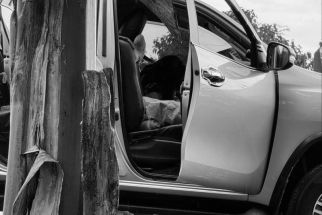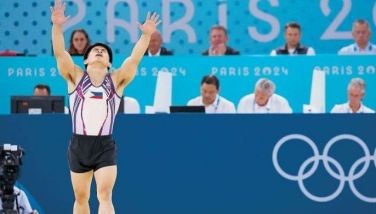Vienna, Austria: The City of Music and Art
September 25, 2006 | 12:00am
Our walk started at the Stephansdom, the St. Stephen's Cathedral, which defines the city centre and has been the heart of Vienna for centuries especially since an immense population of Austrians are Roman Catholic. Inside the church was beautiful because most portraits and symbols were all carefully hand-painted. We lit some candles as a sign of respect and moved on to the next attraction.
Another attraction is known as StaatsOper, the State Opera or the Vienna Opera House situated in the first district of Vienna at the southern end of the Kärntnerstrasse. The building itself resembles Italian Renaissance, as this epoch was important for both art and music. Locals right outside the StaatsOper dressed in their national costumes called on to passers-by to view one of their daily performances. This was when I had a real conversation with a local. I was very much intrigued to speak to one of Vienna's locals because this was when I realised the difference in accent in comparison to Austrians and Germans. Although both speak the German language, Austrians tend to speak really slow and pronouncing their "R's" don't come across as too strong. But what I liked and found most fascinating about the locals is that they speak good English and still apologise non-stop for not being able to speak "proper" English. I always had to say with a smile, "Not to worry, I understood perfectly what you said" although getting around wasn't a major problem because Wolf speaks perfect German.
Moving on, we walked on to the Naturhistorisches Museum or the Museum of National History and its twin building, the Kunsthistorisches Museum or the Museum of Fine Arts where the richest and most important art collections in the world could be found! The location for both these attractions was the perfect setting as far as literature is concerned.
As we walked down the Museumsplatz, I've noticed something slightly different in Austria in comparison to most European countries. It is that architecture is much simpler, but well designed in such a massive and historical city. I then figured that this is how and why the city is so well kept. I felt that Vienna is relatively a safe city and it is easy to get around because everything is so organised.
In between our walks, Wolf and I felt hungry so we decided to have a meal at one of Vienna's traditional restaurants. We each ordered a Wiener Schnitzel, a bread crumbed and fried veal escalope served with Erdäpfel Salat (side dish made from potatoes). It was so tasty! As soon as we were finished I looked out the window and saw a lady with a child by the fountain having ice cream, which I later knew was called "Eis". Eis is popular in Vienna and you will find it in every corner of the city. Having ice cream in a cone on your hand out of hunger, craving or boredom is very continental so Wolf and I joined that trend after our meal.
We walked through many other attractions such as the Museumsquartier, the Volkstheater, the Justizplast and the Parlament and admired the beautiful scenery. (Look at the words closely and they will make sense to you in English). It proves that German isn't so hard after all!
Another highlight was the Rathausplatz (the City Hall). What I loved most about it apart from its intricate architecture was its touch of modernism. I also liked the colour of the plants that were decorated by each windowsill.
After the long walk, we took a long break at the Sigmund Freud Park directly in front of the Rooseveltplatz and spoke within ourselves on how much we loved Vienna and how nice it was to be in one of the world's most historical city.
The following morning, we took the train to another part of town where the Schloß Schönbrunn (Schönbrunn Palace) is located. This is also the place where I coincidentally met a few members of my family. I was amazed and very happy to see everyone on the other side of the world, at that exact place on that exact moment! Life is always full of surprises because you'll never know what you'll find.
We practically stayed at the Schönbrunn Palace area for most of the day because of its surrounding buildings, botanical gardens, labyrinth, pavilion, zoological park and Palace Orangery. There is so much to see that you will need long hours to cover the palace grounds. Apart from the Schönbrunn Palace known as the most significant cultural monument in Austria, to Mozart, the palace is very special because it was here that the prodigy had his first public appearance. The palace orchestra certainly takes you back to the golden era of Viennese classical music by Mozart and Strauß.
Later that day, we decided to go for another traditional treat of Die Original Sachertorte (a famous chocolate cake with a unique flavour and well-kept secret since 1832) and Das Wiener Café (traditional coffee). I have to admit that it was really mouth-watering, so I decided to buy a whole Sachertorte to take home.
Toward the end of the day, we went to another part of town, to the Volksprater. The Prater is Vienna's landmark amusement park where one can enjoy the view of the city from the huge ferris wheel as well as the Planatarium, Prater Museum and 200 fun fair rides!
Vienna's best asset is its being musically inclined, a city that has been synonymous with music for centuries. Words that sum up Vienna are historical, massive and musical.
BrandSpace Articles
<
>
- Latest
- Trending
Trending
Latest
Trending
Latest
Recommended



















